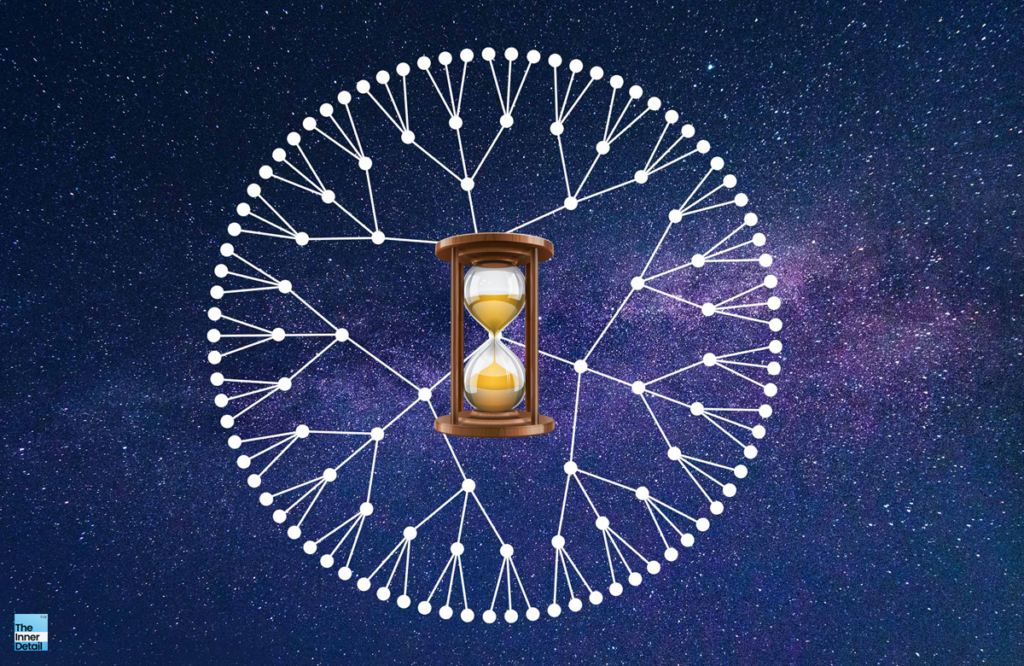Scientists’ new technique harnesses time reversal in quantum system, enabling precise measurements of the vibration of atoms for detecting gravitational waves or dark matter.
Quantum is whole another exciting and interesting world, physicists and scientists had ever seen. Still not fully unknotted, quantum particles behave differently in their world, contrast to the physical world, which scientists are stirring upon for improving their atomic clocks’ precision.
MIT Scientists have been in works on measuring atomic oscillations, how they evolve over time, for honing the precision of atomic clocks as well as quantum sensors. The atomic oscillations could indicate details about dark matter or gravitational waves. This is because falling bodies in gravity are subject to random fluctuations whose characteristics depend on the quantum state (in the atomic level) of the gravitational field.
Atomic Vibrations & Quantum Mechanics
Atomic particles like electron, proton behave arbitrarily and their oscillation are random like flipping a coin, as the laws of quantum mechanics take over in the atomic world. Due to this, it’s difficult for assess atomic oscillations and currently existing atomic clocks observes thousands of ultracold atoms for measuring their oscillation. Still, they have some uncertainty and their time is not precisely measured.
Tackling this hurdle, scientists suggest two ways for precise atomic clocks – quantum entanglement and time reversal.
Quantum Entanglement
For achieving the accuracy in atomic clocks, MIT scientists experimented by entangling the atoms – a quantum phenomenon by which particles are coerced to behave in a collective, highly correlated state.
It is a bizarre, counterintuitive phenomenon that explains how two subatomic particles can be intimately linked to each other even if separated by billions of light-years of space.
The entangled state enables oscillations of individual atoms to shift toward a common frequency which would take far fewer attempts to measure accurately. Still, the tools available for atomic oscillations were not sensitive enough to record subtle changes in the atomic level, pushing researchers to opt time reversal concept.
Time Reversal in Quantum

According to pure quantum system, a group of atoms completely isolated from everyday classical noise or disturbance, would evolve forward in time in a predictable manner and so atoms’ interactions could be described precisely by applying “Hamiltonian” concept– a mathematical description of the system’s total energy.
Hamiltonian system is nothing but, predicting how a particle would behave considering the total energy of the particle – for example, predicting how a dropped ball would bounce on a floor.
Scientists are applying Hamiltonian to track what the system is doing through time, like a quantum trajectory. In quantum, this could tell how a subatomic can de-evolve, or go back to the initial state.
This is the core of the study – “the idea is, if you could reverse the sign of the Hamiltonian, every small disturbance that occurred after the system evolved forward would get amplified if you go back in time,” the study’s co-author explains.
What they did?
The team used a system of lasers to trap the atoms to coerce them for a correlated oscillation. They sent blue-tinged entangling light and let the entangled atoms evolve forward in time, then exposed them to a small magnetic field (to disturb them), which introduced a tiny quantum change, slightly shifting atoms’ collective oscillations.
Such a quantum shift is impossible to detect with existing sensors and for finding if the shift had really occurred, physicists applied time reversal to boost the shift. They sent in another red-tinged laser that stimulated the atoms to disentangle – as if they were evolving backward in time.
As the atoms were settling back to their unentangled states, they measured their oscillations and found that their final phase was markedly different from their initial phase (before they were tried to entangle) – which is clear evidence that a quantum change had occurred somewhere in their forward evolution.
Related Posts
Uses of Time Reversal
- After repeating the laser experiment thousands of time, scientists found that their entangled system was up to 15 times more sensitive than similar unentangled atomic systems. This means, it would require reduced number of measurements (by a factor of 15) for current atomic clocks, further implying that atomic oscillations could be put into more accuracy.
- Achieving the precision of atomic clocks would pave the way for exploring dark matter, gravitational waves or even new, unexpected phenomena.
- This would indeed lead to analysis of how accurately objects or situations will behave in the future when it’s subjected to a change, ultimately letting us know what will happen in the future.
(I would recommend reading it twice for clear understanding.)
Mini Dictionary for the scientific terms in the page
- Atomic Clocks: An atomic clock is a clock that measures time by monitoring the resonant frequency of atoms. It is based on atoms having different energy levels.
- Atomic Oscillation: The oscillation or behavior of an atomic particle.
- Dark matter: Dark matter can refer to any substance (not yet known) which interacts predominantly via gravity with visible matter.
- Quantum Entanglement: Phenomenon known in quantum mechanics, which explains how two subatomic particles can be intimately linked to each other even if separated by billions of light-years of space. Like, changing a particle or object here, would affect its counter-part too.
- Quantum Mechanics: Quantum mechanics is a fundamental theory in physics that provides a description of the physical properties of nature at the scale of atoms and subatomic particles.
Hope the page was useful.. Thanks for reading!
(For more such interesting informational, technology and innovation stuffs, keep reading The Inner Detail).






